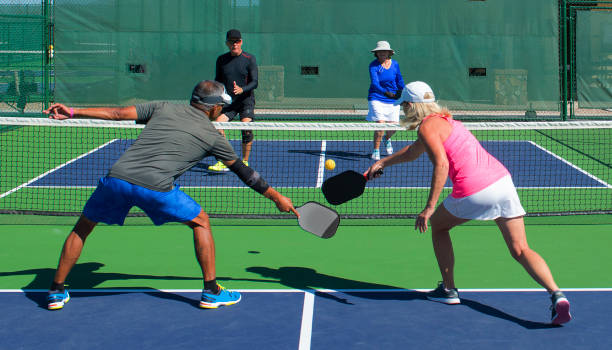General Rules of Robot Sports
Did you know that robot sports have a set of general rules and regulations that govern competitions worldwide? From safety regulations to equipment requirements and fair play guidelines, there are numerous aspects to ponder when participating in robot sports. Understanding the judging criteria, team responsibilities, and potential penalties is vital for any robot athlete. As you navigate the complex world of robot sports, it is essential to grasp these foundational rules to guarantee a successful and fulfilling experience in the arena.
Safety Regulations in Robot Sports
When participating in robot sports, it is important to adhere to strict safety regulations to prevent accidents and guarantee the well-being of both competitors and spectators. Robot maintenance plays a vital role in ensuring the safety of all involved. Regular maintenance checks should be conducted to verify that all parts are functioning correctly, minimizing the risk of malfunctions during competitions. It is essential to have a thorough understanding of the robot's mechanics to identify any potential issues that could compromise safety.
Risk assessment is another critical aspect of safety in robot sports. Before each competition, a detailed risk assessment should be carried out to identify possible hazards and implement measures to mitigate them. Factors such as the arena layout, robot design, and the potential for collisions should be carefully evaluated to minimize risks. By conducting thorough risk assessments, organizers can create a safer environment for competitors and spectators alike.
Equipment Requirements for Robot Competitions
To ascertain the smooth operation and fair competition in robot sports, adhering to specific equipment requirements is imperative. When it comes to robot design, competitions often have regulations dictating the size, weight, and components that the robots can incorporate. These rules guarantee a level playing field and prevent unfair advantages based on design alone. Additionally, programming challenges are an essential aspect of robot sports. Competitions may have guidelines on the types of programming languages allowed, the level of autonomy the robots can have, and the complexity of the algorithms permitted.
To provide a clearer overview, here is a table outlining common equipment requirements in robot competitions:
| Equipment Requirement | Description |
|---|---|
| Robot Size and Weight | Specifies the maximum dimensions and weight a robot can have. |
| Component Restrictions | Outlines the types of components allowed or prohibited in robot design. |
| Programming Guidelines | Defines the rules regarding the programming languages and autonomy level. |
Adhering to these equipment requirements ensures that competitions are fair, challenging, and push participants to innovate within the specified boundaries. It also fosters creativity and problem-solving skills among competitors, as they aim to create robots that excel within the defined parameters. By understanding and following these regulations, participants contribute to the overall integrity and excitement of robot sports.
Fair Play Guidelines for Robot Athletes
As you consider the fair play guidelines for robot athletes, it is essential to focus on ethics in competition and the importance of showing respect towards opponents. These points form the foundation for maintaining integrity and sportsmanship in robot sports, setting a standard for honorable behavior within the world of mechanical athleticism. By upholding these principles, robot athletes can guarantee a level playing field and foster a spirit of camaraderie in the world of competitive robotics.
Ethics in Competition
Adhering to fair play guidelines is essential for robot athletes to maintain the integrity of competition and uphold ethical standards in robot sports. Ethical decision making plays a pivotal role in shaping the behavior of robot athletes during competitions. By emphasizing sportsmanship development, robot athletes learn the value of honesty, respect, and fairness in their interactions with both fellow competitors and the rules of the game. Maintaining these ethical principles guarantees that competitions are conducted with integrity and that the outcomes are a true reflection of the athletes' skills and capabilities. Robot athletes that prioritize ethical decision making contribute to a positive and uplifting atmosphere in the world of robot sports, promoting a culture of fairness and respect among all participants.
Respect for Opponents
In robot sports, demonstrating respect for opponents is a foundational principle outlined in the fair play guidelines for robot athletes. Sportsmanship in robot competitions is crucial for fostering a positive environment and ensuring fair play. When engaging in rivalry dynamics, it is essential to uphold respectful behavior towards your opponents, acknowledging their skills and contributions to the competition. By showing respect, you not only adhere to the ethical standards of robot sports but also contribute to a more enjoyable and fulfilling experience for all participants. Understanding the nuances of rivalry dynamics can help robot athletes navigate competitive scenarios with grace and integrity, ultimately enhancing the overall spirit of sportsmanship in the domain of robot sports.
Judging Criteria for Robot Sports Events
When evaluating robot sports events, the judging criteria play an essential role in determining the performance and success of each competitor. These criteria are meticulously designed to assess various aspects of a robot's performance, from technical precision to creativity, innovation, and adaptability. Let's explore the key factors that judges consider during robot sports events:
| Criteria | Description | Importance |
|---|---|---|
| Technical Precision | Evaluates the accuracy and consistency of robot movements and actions. | Critical for scoring as it demonstrates the robot's capabilities. |
| Creativity | Assesses the originality and uniqueness of the robot's design and strategies. | Encourages competitors to think outside the box and push boundaries. |
| Innovation | Considers the use of new technologies or approaches in the robot's performance. | Rewards inventive solutions that enhance the overall competition. |
| Adaptability | Examines how well the robot can adjust to unexpected challenges or changes in the environment. | Demonstrates the robot's versatility and problem-solving skills. |
| Performance | Overall evaluation of the robot's efficiency, effectiveness, and achievement of objectives. | Reflects the culmination of all criteria and determines the final score. |
Understanding these judging criteria is critical for competitors to tailor their robots effectively and showcase their skills in robot sports events. By emphasizing technical precision, creativity, innovation, and adaptability, participants can aim for excellence and leave a lasting impression on both the judges and the audience.
Team Guidelines and Responsibilities
To ensure performance in robot sports events, understanding and adhering to team guidelines and responsibilities is optimal for competitors. When it comes to excelling in robot sports, effective team communication and strategic planning are essential. Here are some key guidelines and responsibilities for teams to bear in mind:
- Open Communication: Foster an environment where team members can freely share ideas, concerns, and feedback. Transparent communication enhances coordination and problem-solving during competitions.
- Strategic Planning: Develop a detailed game plan that outlines roles, responsibilities, and strategies for different scenarios. Strategic planning guarantees that every team member understands their tasks and contributes effectively to the overall performance.
- Regular Team Meetings: Schedule regular meetings to discuss progress, address challenges, and make necessary adjustments to the strategy. Consistent communication keeps everyone aligned and focused on the team's goals.
- Conflict Resolution: Establish protocols for resolving conflicts or disagreements within the team. Addressing conflicts promptly and professionally prevents disruptions to teamwork and maintains a positive atmosphere.
- Continuous Improvement: Encourage a culture of learning and growth within the team. Regularly evaluate performance, identify areas for improvement, and implement measures to enhance skills and strategies.
Penalties and Disciplinary Actions in Robot Sports
When it comes to the POINTS in robot sports, understanding the Penalty Enforcement Process and Player Misconduct Consequences is important. These aspects play a significant role in maintaining fairness and sportsmanship in competitions. Familiarizing yourself with these rules can help you navigate the consequences of violating regulations in robot sports.
Penalty Enforcement Process
Enforcing penalties in robot sports involves a meticulous process to guarantee fair play and uphold the integrity of the competition. Rule interpretation and referee discretion are key components in the penalty enforcement process, ensuring that decisions are made consistently and fairly. Here are five essential steps in the penalty enforcement process:
- Identification of Infraction: The referee identifies the rule violation or misconduct.
- Assessment of Penalty: The severity of the infraction determines the appropriate penalty.
- Communication: The referee communicates the penalty to the teams or individuals involved.
- Documentation: All penalties are documented to maintain a record of the game's integrity.
- Enforcement: Penalties are enforced promptly to maintain the game's flow and fairness.
Player Misconduct Consequences
In maintaining the integrity of robot sports competitions, addressing player misconduct through penalties and disciplinary actions is a critical aspect of ensuring fair play and upholding the standards of the game. Sportsmanship expectations are at the core of robot sports, dictating behavior standards and fostering a spirit of respect among competitors. When these expectations are not met, disciplinary actions come into play to maintain order and fairness. Misconduct repercussions can range from warnings and point deductions to disqualifications, depending on the severity of the offense. By enforcing these consequences consistently and fairly, robot sports organizers can create a competitive environment where sportsmanship is valued, and players are held accountable for their actions.
Frequently Asked Questions
Can Robots Compete in Multiple Sports Disciplines or Are They Limited to One Specific Type of Competition?
You might be surprised by the versatility of robots in sports. These cross-discipline competitors can excel in multiple areas. They are not limited to just one type of competition, showcasing their adaptability and potential for diverse athletic feats.
Are There Any Age Restrictions for Participants in Robot Sports Events?
In robot sports events, age restrictions vary based on the competition. Some events may have specific age brackets to confirm fair play and safety. Training programs cater to different skill levels, promoting gender diversity and inclusivity.
How Are Tiebreakers Handled in Robot Sports Competitions?
When facing a deadlock in robot sports, tiebreakers are the ultimate deciders. These procedures guarantee fairness and push competitors to expose hidden strategies and tactics. Embrace the challenge and let your innovative spirit shine!
Is There a Limit to the Number of Spectators Allowed at Robot Sports Events?
There may be limits on spectators at robot sports events depending on ticket sales and venue capacity. To enhance fan engagement, organizers often offer live streaming opportunities, ensuring all enthusiasts can enjoy the competition.
Are There Any Regulations Regarding the Use of Autonomous Vs. Remote-Controlled Robots in Competitions?
When it comes to regulations in robot sports, the distinction between autonomous and remote-controlled robots is vital. Autonomous bots operate independently, while remote-controlled ones rely on human input. Guidelines often specify the control method allowed for fairness and competition integrity.






